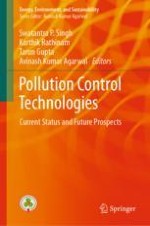2021 | OriginalPaper | Chapter
7. Membrane Technology for Desalination and Wastewater Recycling
Authors : Najmul Haque Barbhuiya, Swatantra P. Singh
Published in: Pollution Control Technologies
Publisher: Springer Singapore
Activate our intelligent search to find suitable subject content or patents.
Select sections of text to find matching patents with Artificial Intelligence. powered by
Select sections of text to find additional relevant content using AI-assisted search. powered by
